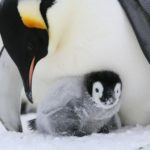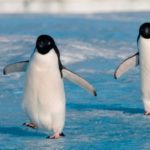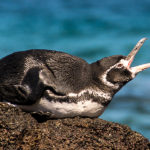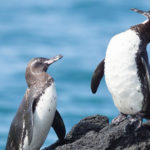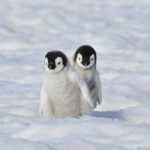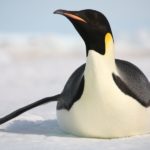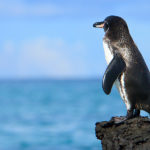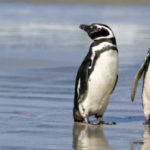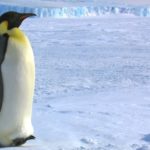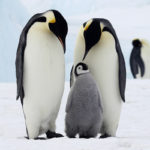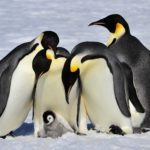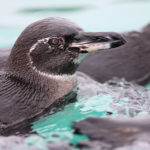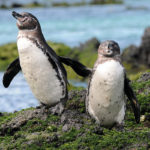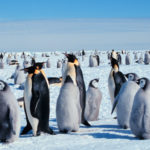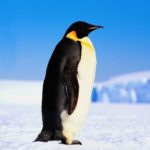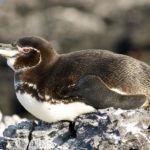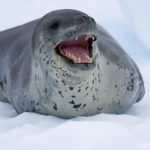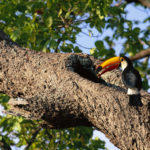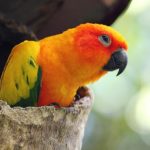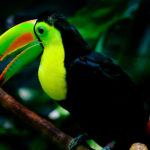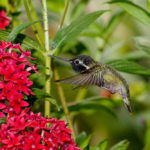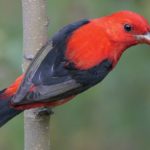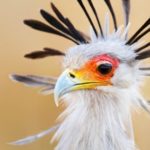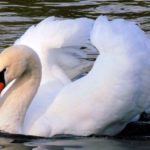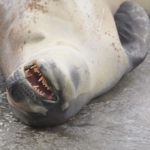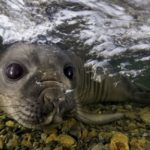Penguins
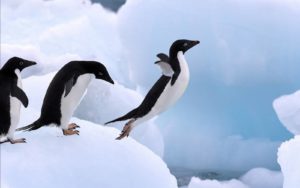 Penguins are one of the oldest birds on Earth. They represent a separate group of birds, isolated in a separate squad of Penguin-like. There are 16 species of penguins in the world.
Penguins are one of the oldest birds on Earth. They represent a separate group of birds, isolated in a separate squad of Penguin-like. There are 16 species of penguins in the world.
The size of these birds ranges from 40 cm in length and weighs 1.5-2 kg in a small penguin to more than a meter in length and weighs 35-40 kg from an imperial penguin. The body of the penguins is elongated streamlined, the neck is short and thick, the head is of proportional size with a sharp beak. The wings are not long, the shape of the paw, and the paws are very short with swimming membranes between the toes. Legs of penguins are located not like all birds in the middle of the trunk, but are far back.
Because of this, penguins to keep the balance are forced to keep the body upright. Penguins are flightless birds, but their body has a large muscle mass. The penguins’ pectoral musculature is 25% of the body weight, which is significantly larger than that of birds capable of flying. The skeleton also has significant differences: the penguins’ bones are heavy and resemble the bones of marine mammals. Of course, all these signs indicate the excellent fitness of penguins for the aquatic way of life.
All kinds of penguins have the same coloring – the head, back and wings are painted in dark colors (more often black or gray), the bottom of the body is white. Some species have additional ornaments in the form of beams of golden feathers on the sides of the head. The nature of the plumage indicates a certain primitiveness of the penguins: the feathers are located evenly over the entire surface of the body, while in other birds they grow in rows – pterilia. The feathers themselves are short and very hard, resembling scales. The tail plumage of these birds is so strong that penguins can rest on the tail with all the weight of the body like woodpeckers.
You can meet penguins in Antarctica, on the adjacent islands and the coast of South America. True, some species moved farther north. So, the Galapagos penguins settled the islands of the same name, and the spectacles live on the southern coast of Africa. But these species also settle only where cold ocean currents are present. Different species of penguins live in different landscapes: most settle on rocky coasts of islands and continents, but some species can be found on sandy beaches, in grass thickets, and penguins are magnificent even in coastal forests. The imperial penguin generally nests in the Antarctic deserts in the interior of the continent.
All kinds of penguins are public birds, forming colonies from several hundred to one million individuals. The nature of these birds is friendly, except when they are quarreling during nesting because of a shortage of seats.
In order not to freeze the penguins often stand leaning on the tail and heels, and the paws at the same time are raised above the ground. Overland penguins move slowly, because of the vertical position of the trunk and short paws, they shoot in small clumsy steps. But these birds can make short jumps, storming coastal rocks. If the penguin “rushes”, he switches to cruising gliding by laying his belly on the ice and pushing his hind legs.
However, all the awkwardness of birds disappears as soon as they find themselves in the water. Penguins are the most perfect of all floating birds! In the water, these birds produce the impression of fish: they easily and naturally slip into its thickness, periodically jumping out of the water like dolphins to gain speed; They dive to a depth of 100 m! Penguins feed on crustaceans or fish, and catch it on the go. In search of food, they can spend several hours in the water, swim a day to 25 km.
